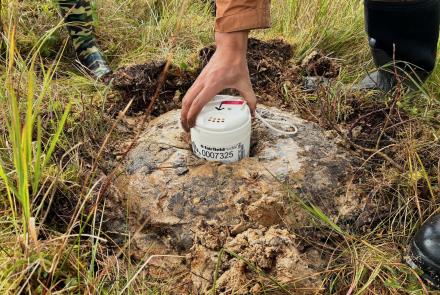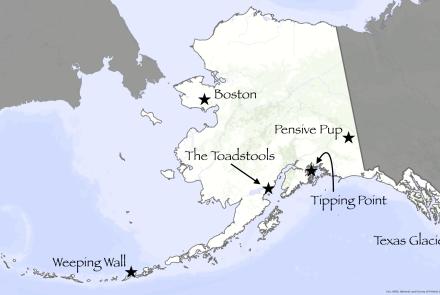Reindeer and Caribou Populations
Today there are perhaps 270,000 caribou and about 24,000 reindeer in Alaska. In 1935, biologist Olaus Murie estimated the caribou population at between one and two million. Others estimated that about 600,000 Alaskan reindeer existed then. Why has the last 45 years brought such a drastic change?
It makes sense to consider together the populations of reindeer and caribou because they are the same species of animal, Rangifer tarandus. Though reindeer and caribou interbreed, there are some differences. Male reindeer tend to be a little smaller than caribou bulls. Reindeer may be a little more white, may have shorter legs and may be slightly more placid than caribou. These differences are so tenuous that it can be hard to tell if one individual is a reindeer or a caribou. However, if you find a caribou with an ear notch or other form of branding, you can be sure it's a reindeer.
Though there had been caribou in western and northwestern Alaska some years before, by 1880 there were few or none. University of Alaska biologist Dr. David Klein suspects that the introduction of firearms during whaling led to the demise of caribou in coastal Alaska.
Whatever the cause, the lack of caribou allowed the successful introduction of reindeer at Teller in 1892. Over the next forty years the reindeer population soared and spread like wildfire across the Seward Peninsula and north and south along the western coast of Alaska. Also like wildfire, the surge in reindeer numbers probably destroyed the range the animals ate from. So for this reason, and perhaps some others, the population crashed to about 30,000 animals by 1950.
The human management of reindeer and caribou obviously requires a bit more long-range planning than is needed to grow cows in a pasture. If the cows eat all the available grass, there is a chance of a new crop the next year. But lichens, not grass, form a large part of the diet of reindeer and caribou, especially in winter. Once a crop of lichens is eaten down or otherwise destroyed, it can take up to a hundred years to recover. More usually, it takes 15 to 50 years for full recovery. Even so, that is a long time.
On Alaska's Seward Peninsula, 14 managed reindeer herds comprising a total of about 20,000 animals have been maintained at roughly the same total population for over 20 years. That stability of the reindeer population may indicate that the herders have a successful management strategy.
It would be interesting to know what would happen over a period of several hundred years if there were no human management of caribou and reindeer in Alaska and western Canada. The reindeer and caribou herds presumably would merge and all be called caribou. Based upon what has happened in the past, it seems that the descendent populations would wax and wane like that of the snowshoe hare, but with a longer cycle. Instead of the 7- or 8-year cycle of the hare, the caribou is most likely to be in the range 50 to 100 years. The cycle might consist of population booms and crashes or it might be less drastic.



